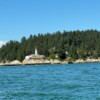
John Calvin and the Natural World
A recent article in The Economist, “Evolution: Unfinished Business”, reflecting on the development and dissemination of Darwin’s theory on the 200th anniversary of his birth, considered the results of a poll on the public’s acceptance of the theory of evolution within several Western countries. In the US, the bar graph showed that roughly 40% of those polled accepted it as being true, some 45% rejected it as being false, and the remaining approximately 15% were not sure.1 The article quotes a Gallup poll taken in 2008 that “only 15% of people [in the US] agree with the proposition that ‘humans developed over millions of years’, up from 8% in 1982.”2 Why is the public’s acceptance for this scientific theory so negative? Are people unaware of the scientific evidence for the theory, or is this theory being rejected purely on metaphysical grounds? Or, is there some other explanation? For some, perhaps it is the conflict, apparent or real, between what they fideisticly hold to be true and what science asserts. Has this rejection of science for reasons of religion always persisted?
A partial answer is given by Davis A. Young in his recently published John Calvin and the Natural World. Young writes from the perspective of a committed Christian who also is a trained geologist, holding his Ph.D. in geological science from Brown University. In the carefully researched book, he examines the extensive writings of that magisterial Reformer to ascertain Calvin’s views on those scientific theories and conclusions of his own day. A major conclusion that Young develops is that this prominent leader of the Protestant Reformation was very interested in the scientific views prevalent in his time and very supportive of the conclusions of their scientific contributions. Frequently, Young asserts, Calvin would include what had been learned from science as illustrations in his sermons.
The motivation behind this book is to consider “how Christians living in different times have understood the biblical references to the natural world in the context of the knowledge and ideas of their own times” (viii). Specifically, since Calvin’s influence continues to have an impact in many areas of modern Western thought, Young examined the extensive corpus of Calvin’s collected works to “point out how Calvin explained biblical references to natural phenomena and to shed some light on his own ideas about the natural world and scientific explanations of that world” (viii).
Calvin, consistent with the medieval tradition preceding him, accepted the two books of revelation. Certainly, Calvin is known for his careful exegesis of the Bible, the book of special revelation. But, Calvin also examined the book of nature to fathom what natural revelation might tell us about its Creator. Young concludes that Calvin “was, in reality, extremely appreciative of scientific work” (2). While for Calvin, Scripture was the final authority on his knowledge of God, knowledge of the natural world was also quite relevant for the way it manifested the work of its Creator. Calvin endorsed the ancient dictum: “All truth is God’s truth.” Thus we can learn something about God even from non-believing students of natural science. Through His creation, God has revealed something of Himself and His Nature even to the heathen. Scripture asserts that “the heavens declare the glory of God” (Ps19:1 NIV)
This great Reformer sought to establish educational institutions that would teach the liberal arts as well as natural science. (Thus too, his follower, John Knox, together with his assistant and successor Andrew Melville would start schools throughout Scotland.) While Calvin rejected the natural knowledge of the Creator as being the source of any spiritual wisdom, he recognizes that science can expand our knowledge of the infinite glory of the Creator.
Yet, Calvin was careful to distinguish between what we refer to astronomy from what we refer to as astrology. In his day, part of the motive to study astronomy and determine the position of the planets and stars was to make predictions of human actions and to ascertain the propitiousness of certain actions or events. For this Reformer, God was in control of the natural world; hence the planets or stars themselves have no influence on human history. (Calvin followed Augustine in this respect; that Church Father repeatedly rejected any role for astrology for believers.) Young quoted Calvin as saying “the abundance of goods, wealth, and peace…do not proceed from the influence of the stars, but from the blessing of God” (42).
Calvin “probably wrote more about the heavens than any other aspect of the physical creation” (23). Young notes that while Calvin had lived during the time of the debates between the geocentric and the heliocentric universe, he did not side with the modern theory. Young dismisses this as Calvin’s not wishing to comment on matters outside his professional training. That is, Calvin’s extensive learning was in Scripture and the Classics, which did not equip him to adjudicate between these two paradigms. Young evaluates the writings of several historians of science who had claimed that Calvin is anti-Copernican in his perspective, rejecting their assertions. Unlike some of the theologians of his day, Calvin “issued nounequivocal condemnation of Copernicus by name” (49). Rather, he seemed to be willing tolet the geocentric-heliocentric universe debate be settled by those with better training in the astronomic sciences.
Regarding the biological sciences, Calvin had not “thought through in detail exactly how the organic world changed in response to the Fall, just that it did” (125). Young cites Calvin’s commentary on Genesis 2 to the effect that some of the animals present in today’s world had not been created during the initial week of creation. While Calvin obviously predated Darwin’s theory of evolution, Young cites a follower of Calvin, B.B. Warfield, a one-time professor of systematic theology at Princeton Seminary, as being open to the possibility of evolution, in contrast to creation ex nihilo, which occurred “in the beginning,” as being among secondary causes which occurred within and over time. Yet Young affirmed Warfield to assert that “Calvin had no theory of evolution” (131). Young then traced the debate of evolution vs. creation to another Reformed theologian, John Murray, who had disagreed with Warfield’s view of evolution. Young concludes that “we are not warranted in looking to Calvin as some sort of proto-evolutionist” (133).
In his analysis of Calvin’s views on geology, Young’s particular area of scientific training and expertise, he takes greater precision in observing that Calvin’s acceptance of the young earth and the global flood of Noah were not inconsistent with the science of his day. For us, with today’s much greater understanding of the fossil record and the relative concentration of radioactive elements with their daughter isotopes, how do we react to Calvin’s views? First, Young notes that “Calvin was often quite reluctant to indulge on scientific speculation beyond what was stated in the text” (159-160). Second, Young considers Calvin’s “principle of accommodation,” where Calvin applies the rhetorical skills he had learned from the Classical writers and applied to his own preaching. Young suggests that Calvin “recognized that God himself engaged in a kind of pedagogical rhetoric in creation, incarnation, and Scripture” (161). That is, Calvin held that “God accommodated himself to humanity by acting and speaking in ways that finite creatures could grasp” (161).
Thus, for example, the six days of creation teaches that God had created over a span of time. Young’s treatment of this principle of accommodation is very helpful for those asserting a disjuncture of the teachings of science and scripture. For Young, Calvin is not taking scriptural passages such as the six days of creation in their wooden literalism, but as God communicating to finite minds that God had created the heaven and earth. To illustrate this point, Young cites other passages displaying metaphors of God running the universe, such as Psalm 19 that describes God as having established a tabernacle for the sun. So, the Bible is not affirming “the truth of scientific exactitude or even of scientific reality,” but describing it in a popular manner in a way that could be appreciated by the masses (181). This reflects, no doubt, the development in his own thinking, over years of teaching, that allowed Young both to endorse the findings of geological science and the broad teaching of Scripture in such a way to avoid one area of learning to conflict with the other. Science thus used could enable us to have a greater appreciation for our Creator. This approach, Young asserts, is consistent with how Calvin preached “scientifically-oriented sermons that focused on natural phenomenon” (192).
This book on Calvin’s view of the role of science is relevant for today’s ongoing debates between science and Christianity. Calvin, in maintaining the doctrine of creation, emphasized that God is in control of the universe, not only as its Creator, but also as its Sustainer. Certainly, this view of creation explains why there should be order in the universe—God established that order necessary for science to make laws to explain how nature acts. Thus, Christians should not be “afraid” of science or its discoveries.
Young’s discussion on the principle of accommodation is a very helpful way to hold both the claims of Scripture and the current conclusions of science. If all truth, even scientific truth, is God’s truth, which Calvin, like the early Church Fathers, held, then we must not fear what science has uncovered. Rather, we can understand what scientific minds have contributed to our knowledge of the natural world, allowing us greater opportunity to give glory to its Creator.
Perhaps in another work Young could comment on the metaphysical assertions certain scientists expound as they go beyond the empirical or theoretical knowledge attained within the scientific methodology reaching into metaphysical realms. Even scientists can bring their own prejudices to the table, prejudices all the more pernicious for their having been postulated as being consistent with scientific evidence. No, Christians should not fear what science teaches us regarding the physical world. All truth is God’s truth, as Calvin has emphasized.























